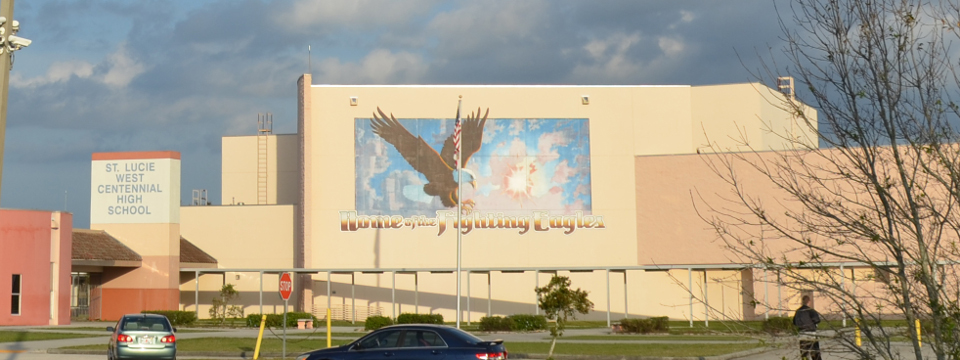
Click here to view the St. Lucie Video Case Study
Challenge
The air-cooled chillers at several St. Lucie County School District sites were reaching the end of their useful life. In addition, utility rates that included both energy usage and demand charges were high. With air conditioning representing one of their largest energy use items, the school district sought more efficient HVAC solutions, but knew that with the poor economy, getting budget approval to move forward with the needed renovations would be difficult. They also knew that, with the hot, humid climate in South Florida, reliable air conditioning was a must.
Solution
The St. Lucie County School District put together an energy advisory board, consisting of vendors, engineers, district staff, utility company personnel, architects, engineers, school board members and others, to address ways to reduce utility costs. Rather than just considering individual schools with immediate needs, the group outlined a long-term plan for the entire district, looking at systems that would need to be replaced in five, ten and fifteen years. They evaluated their replacement vs repair options, taking into account maintenance expenses and the age of the chillers, and analyzed life cycle costs of replacement chillers. Thermal energy storage was suggested as a sustainable solution for the district.
Pleased with its long-term relationship with Trane, which included excellent equipment performance, superior service and training for its technicians, the district asked Trane to bid on its HVAC upgrades. Trane presented a chiller plant upgrade with thermal energy storage, using energy savings and utility rebates to offset the cost of the chiller investment.
Initial success leads to district rollout
After feasibility studies and school board approval, Centennial High School was selected as the first site for a Trane chiller plant upgrade with thermal energy storage. The project reduced the high school’s annual electric bill over 50 percent. Based on this success, St. Lucie County School District moved forward with plans to upgrade thirteen district locations.
Increased efficiency and dehumidification
The chiller plants were designed with highly-reliable Trane air- and water-cooled chillers, ranging from 600 to 1200 tons, to accommodate the varied needs of the sites. Running at cooler temperatures, the chiller plants provide better dehumidification, an important benefit in the humid Florida climate, and operate more efficiently, with less pumping and fewer fans. After comparing options, the district selected the superior design and operation of the CALMAC IceBank® energy storage tanks for the plants. Trane-provided technician training and support was incorporated into each equipment purchase.
Managing peak demand, reducing energy costs
The ice-enhanced water- and air-cooled chiller plants build ice at night during off-peak hours when the cooling and power load is low, allowing the schools to take advantage of lower-cost electricity rates. Using full- and partial-load shifting helps the district manage peak electrical demand and avoid costly substation upgrades.
Unique centralized plant provides cost-effective solution
The chiller plants at three schools located in close proximity of each other were replaced with a centralized chiller plant built in between them. The centralized plant, which includes over two miles of underground piping to connect the schools to the plant, allowed the district to reduce chiller capacity by 300 tons. So as not to interfere with school operations, the centralized plant was installed during the summer, with piping and interconnections being completed after school start-up on weekends and holidays.
Results
Trane chiller plant upgrades with thermal energy storage at thirteen St. Lucie County School District sites have resulted in lower operating expenses, with average annual utility costs reduced 30 percent to 40 percent. “A few years ago our utility costs were about $12 million,” said Marty Sanders, director of growth management, maintenance and facilities, St. Lucie School District. “We’re now under $7 million."
Using the thermal energy storage to shift load from peak to non-peak hours has also reduced demand charges, and resulted in rebate incentives from Florida Power & Light and a three to five year payback on the project. “If we reduce our demand during the peak daytime hours, the utility company doesn’t have to build as many power plants and it also helps reduce brown outs," said Sean Murray, energy manager, St. Lucie School District. "Being part of the solution is good.”
“We were ranked sixtieth of sixty-seven counties in energy usage; we’ve been able to reduce that to eighteenth in the state,” said Sanders. “By reducing our operational costs, we are in essence saving teachers’ jobs, and we’ve saved about a hundred jobs.”
































































































